2.5 Biological Membranes
1/56
There's no tags or description
Looks like no tags are added yet.
Name | Mastery | Learn | Test | Matching | Spaced |
|---|
No study sessions yet.
57 Terms
What is the role of the cell surface membrane?
It allows the transfer of substances in and out of the cell, like water, ions, gases
What is compartmentalisation?
The formation of separate membrane-bound areas in a cell.
The membranes controls what enters and leaves that organelle
Compartmentalisation in lysosome
In a lysosome, the hydrolytic enzymes need to be kept separate from organelles
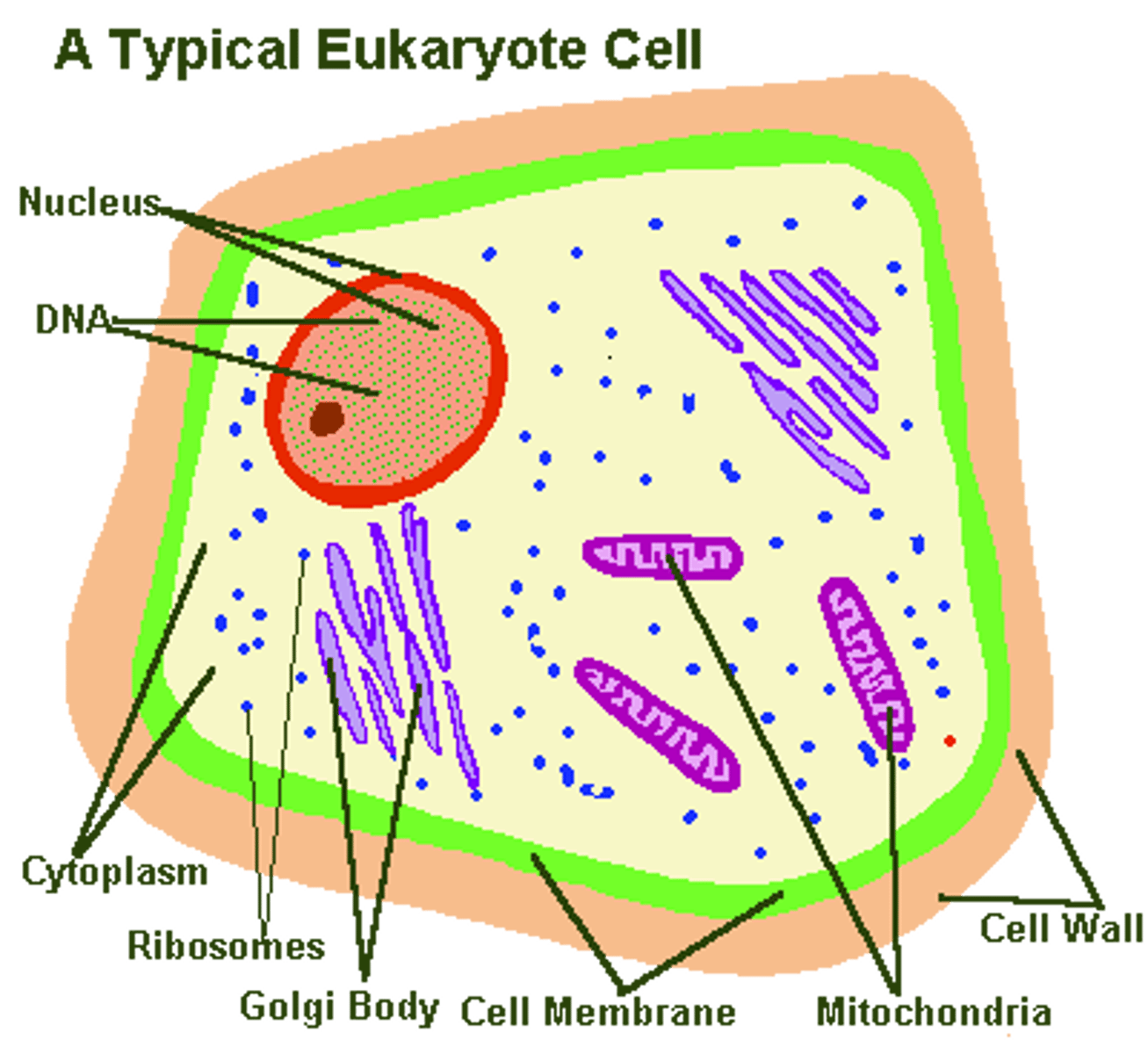
Role of membranes within organelles
Allows for concentration gradients to be established and maintained
Embedding of enzymes into the membrane
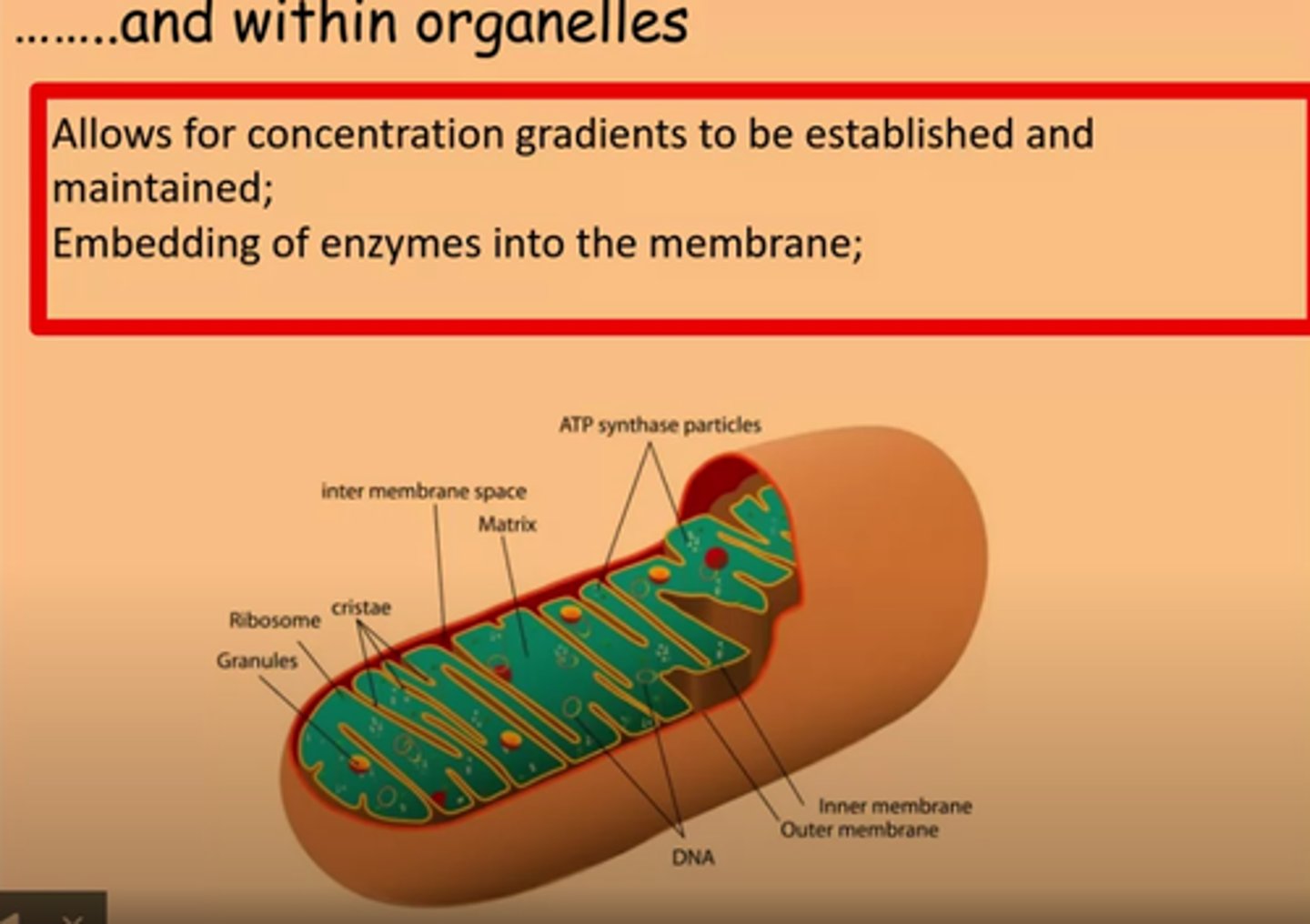
Can a membrane be a site of chemical reaction?
Yes
Sites of Chemical Reactions (proteins in membranes)
- Proteins in the membranes which form organelles or are present within organelles have to be in particular positions for chemical reactions to take place
- For example, the enzyme ATP synthase and electron carriers have to be in the correct positions within the cristae for the production of ATP in respiration.
What's the definition of cell signalling?
Communication between cells;
Cell recognition/identification;
Cells working together;
to trigger a response
How does cell signalling occur?
In order for cells to communicate with each other, they use signals such as hormones
To detect these signals, cells need sensors on their surface which can detect the signal, which are receptors
Each signal will have a specific receptor it can bind to, with a complementary shape
Hormones in cell signalling
Hormones are chemical messengers. They are released into the blood steam. Any cell with a receptor for that hormone is called a target cell.
Medicinal drugs
Medicinal drugs such as beta blockers are designed to stop receptor sites. in this case, the beta blockers stop neurotransmitters binding to heart muscle, therefore decreasing the chance of a heart attack.
Plasma Membrane Structure
Phospholipid Bilayer
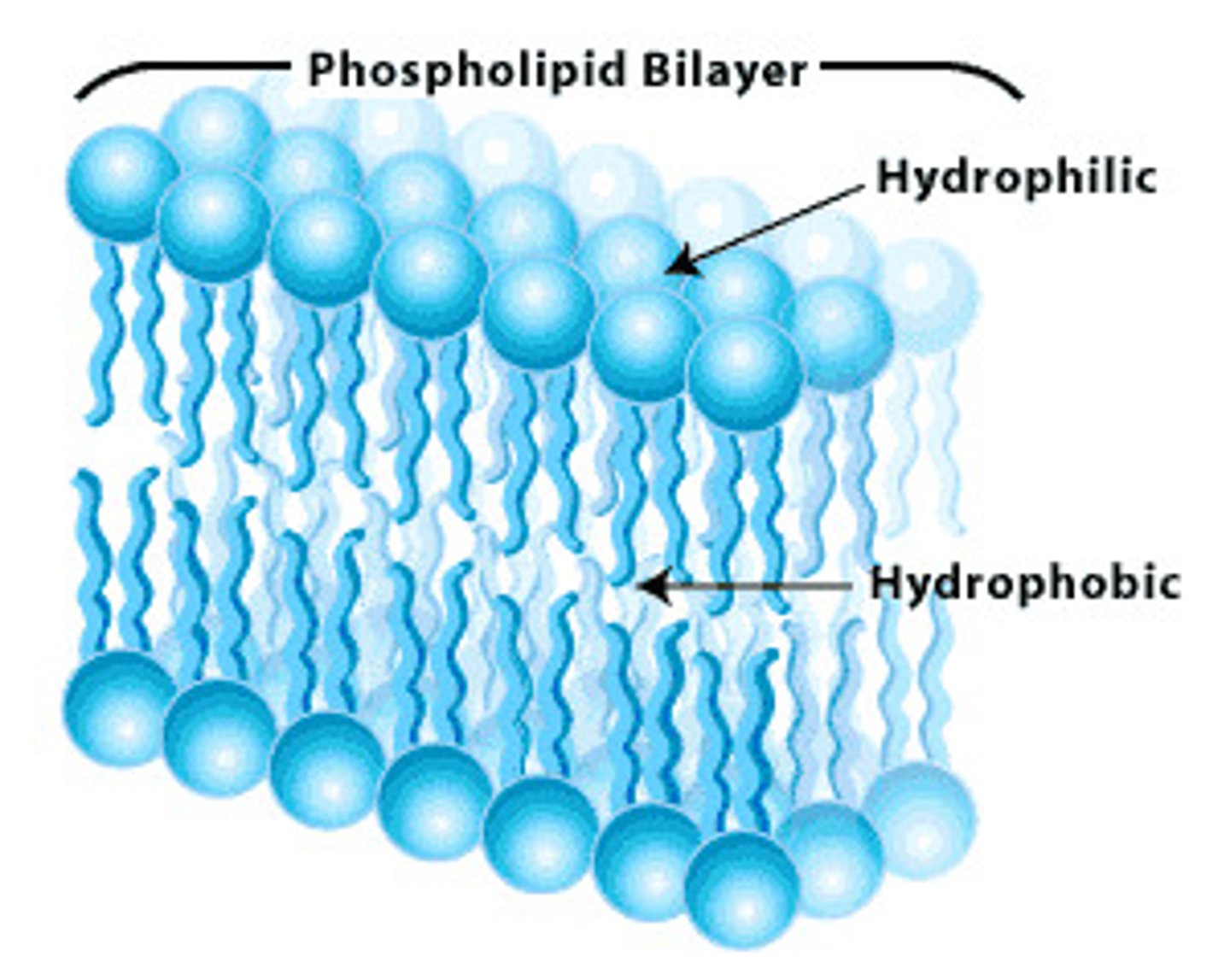
Why do phospholipids arrange themselves in a bilayer at the cell surface?
The hydrophilic heads orientate themselves towards water and the hydrophobic tails orientate themselves away from water.
There is water outside the cell (extracellular fluid) and inside the cell (cytoplasm/intracellular fluid)
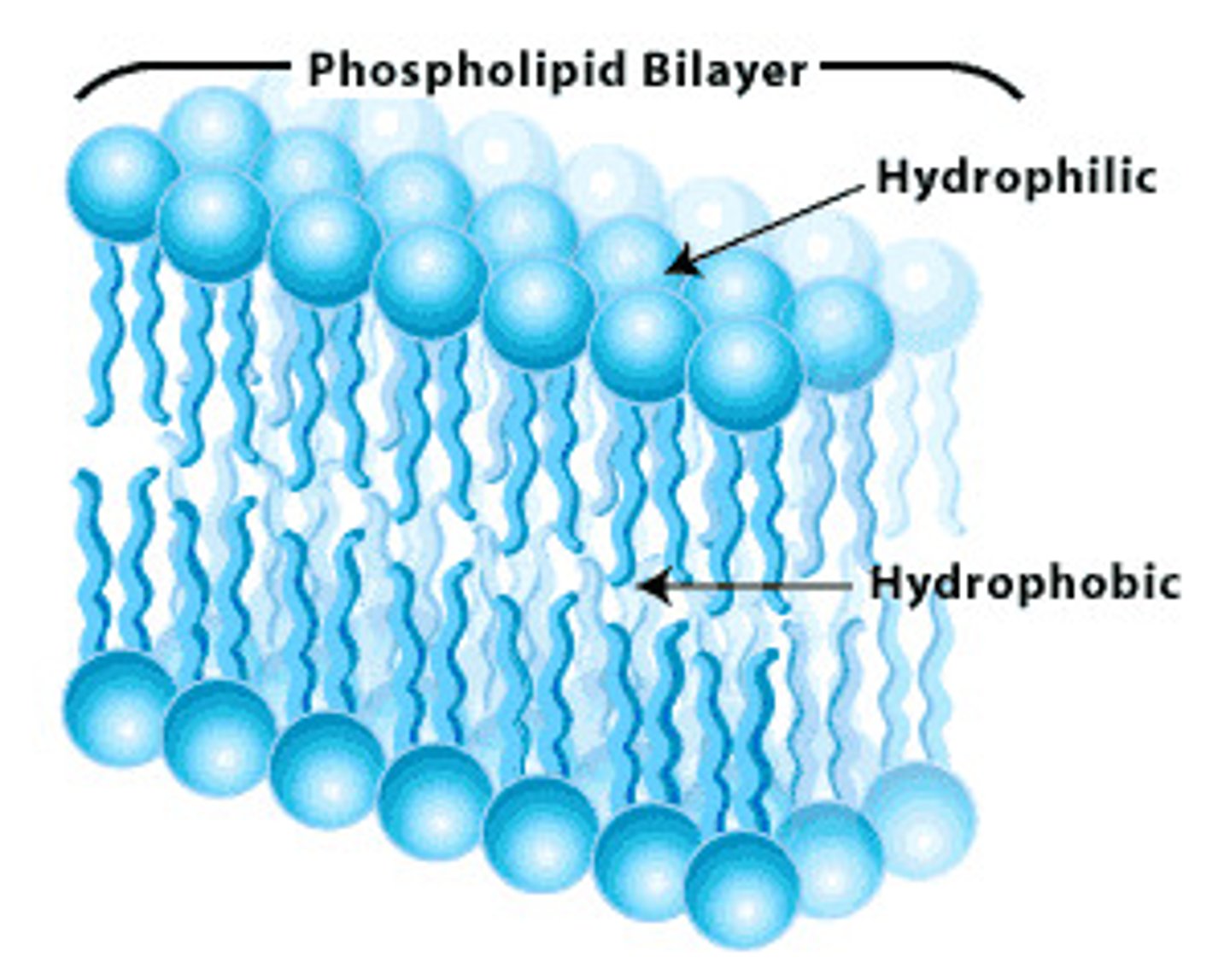
Why is it called the fluid mosaic model?
It if fluid because the membrane is constantly moving and very flexible
The proteins/glycoproteins in it give a mosaic appearance
What does intrinsic protein mean?
- They are transmembrane proteins that are embedded through a membrane.
- They have amino acids with hydrophobic R-groups on their external surfaces, which interact with the hydrophobic core of the membrane, keeping them in place.

Glycoprotein Roles
- Cell recognition/identification
- Cell signalling
- Act as antigens
- Act as receptors. These receptors are complementary and specific.
- Cell adhesion
Examples of Cell Signalling with Glycoproteins:
- Receptors for neurotransmitters such as acetylcholine at nerve cell synapses. The binding of the neurotransmitters triggers or prevent an impulse in the next neurones.
- Receptors for peptide hormones, including insulin and glucagon, which affect the uptake and storage of glucose by cells.
- Some drugs act by binding to cell receptors. They can reduce a cell's response.

Glycolipid
- Cell recognition/identification
- Cell signalling
- Act as antigens
- Act as receptors. These receptors are complementary and specific.
- Cell adhesion
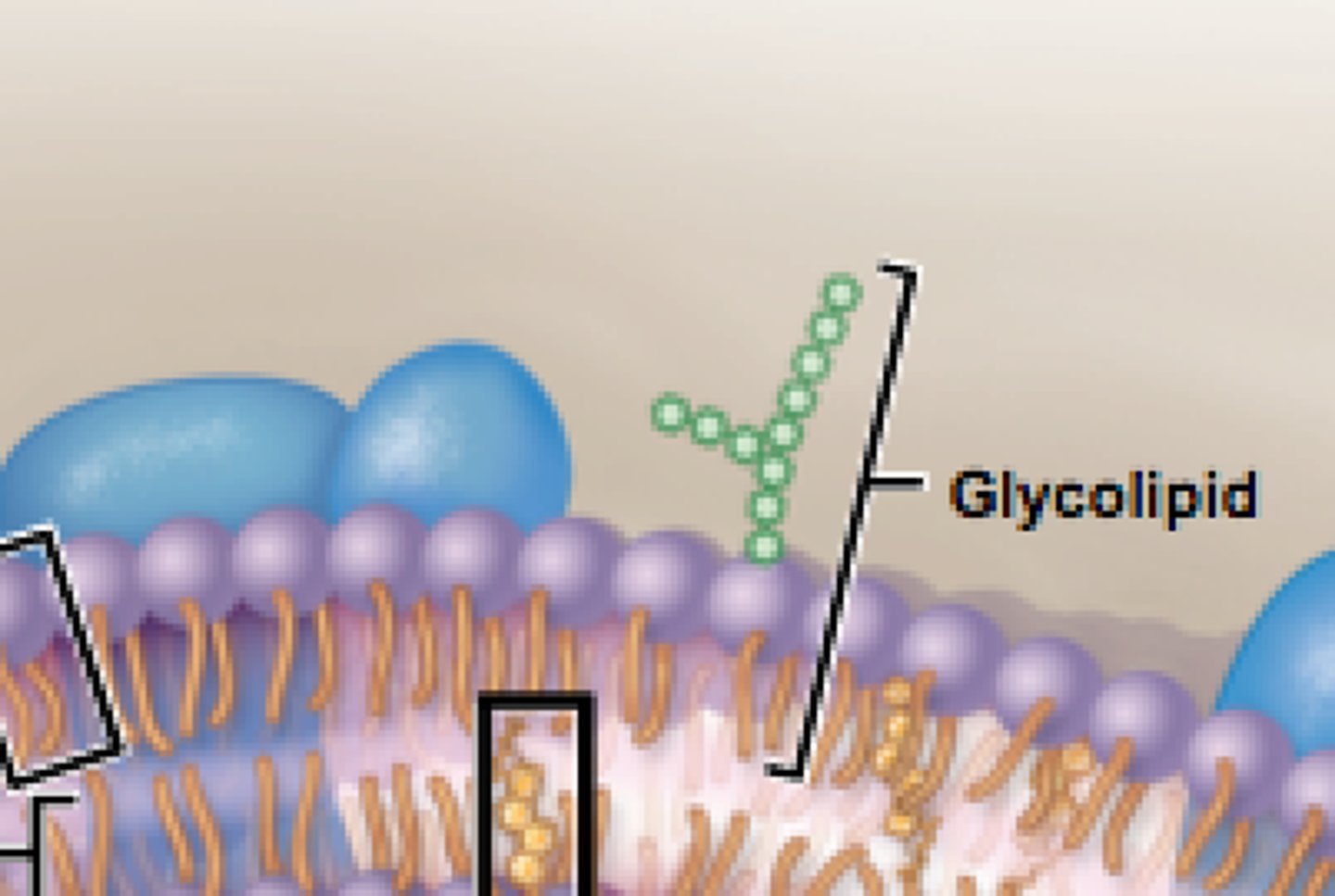
Difference between glycoprotein and glycolipid
Glycoprotein is a protein attached to a carbohydrate, whereas a glycolipid is a protein attached to a lipid
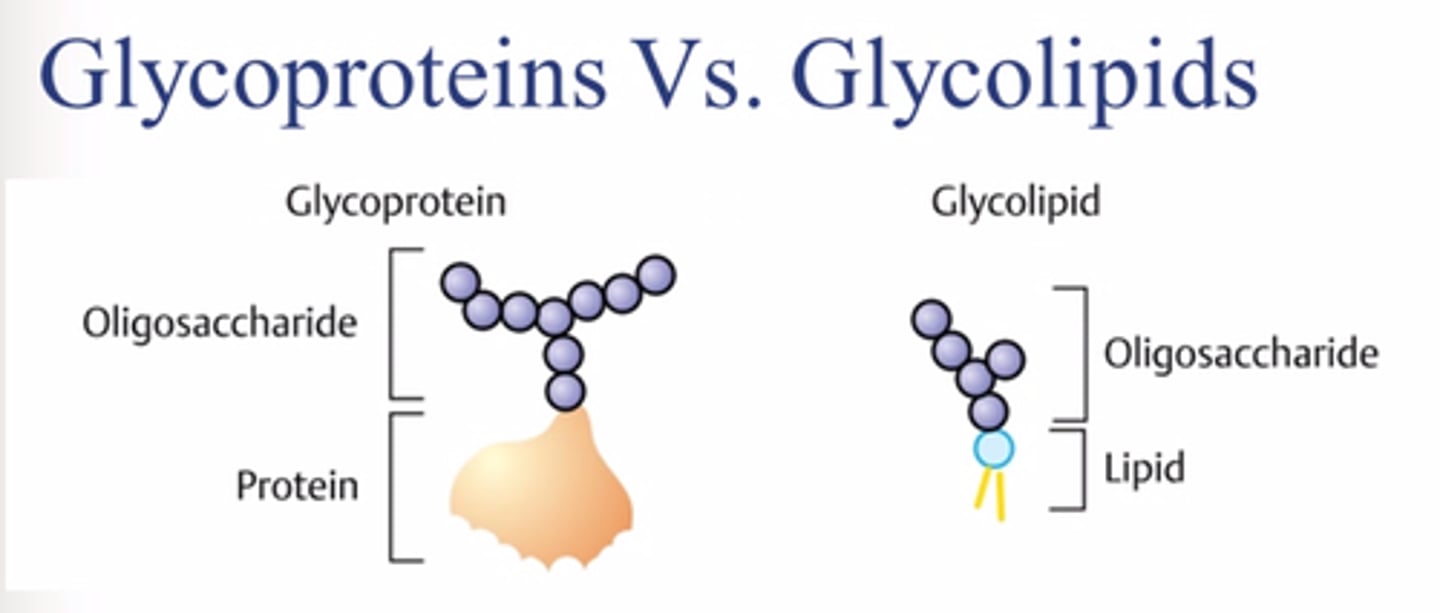
What does extrinsic protein mean?
- They are present in one side of the bilayer
- They have hydrophilic R-groups on their outer surfaces and interact with the polar heads of the phospholipids or with intrinisc proteins
- They can be present in either layer and some move between layers
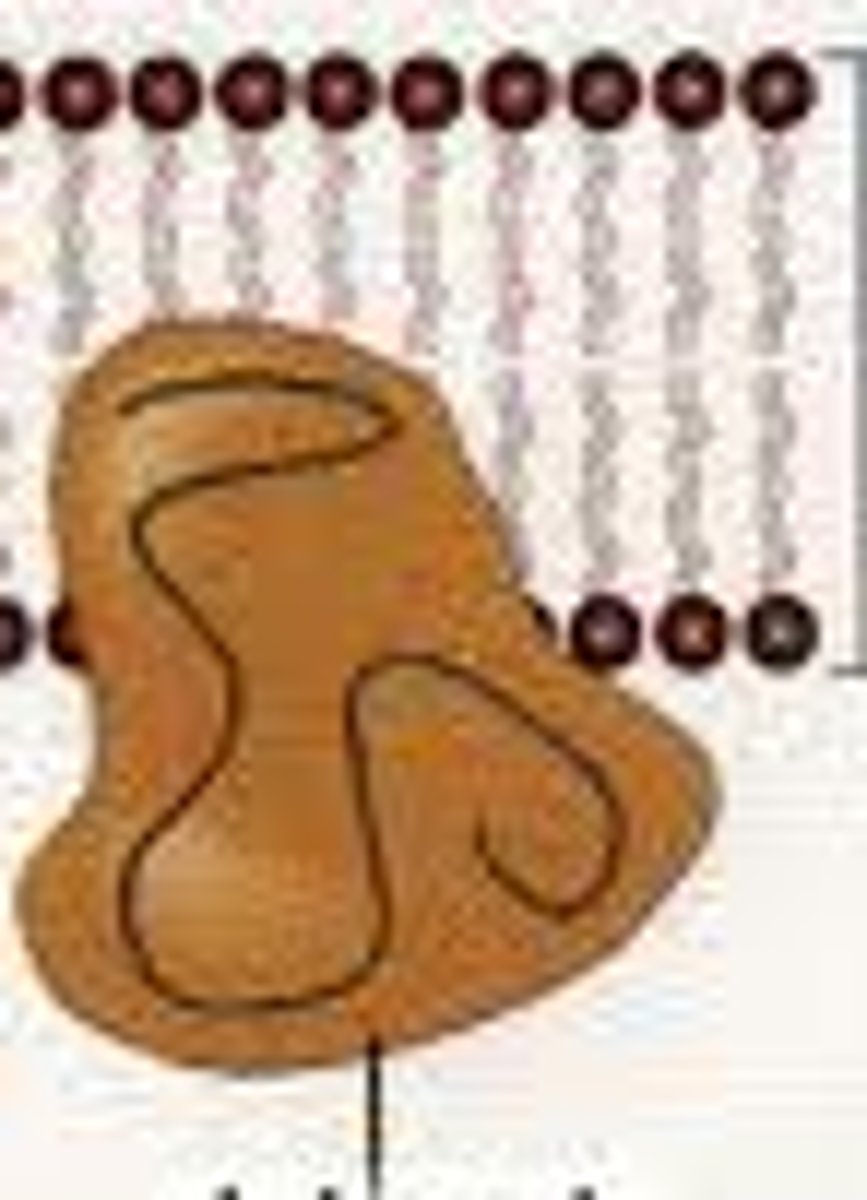
Examples of extrinsic proteins
- Carrier proteins
- Channel proteins
What do carrier proteins transport?
Large and polar substances
What do channel proteins transport?
Polar substances
Cholesterol in biological membranes
It is found between the tails of the phospholipid and regulates fluidity. The more cholesterol, the less fluid the membrane.
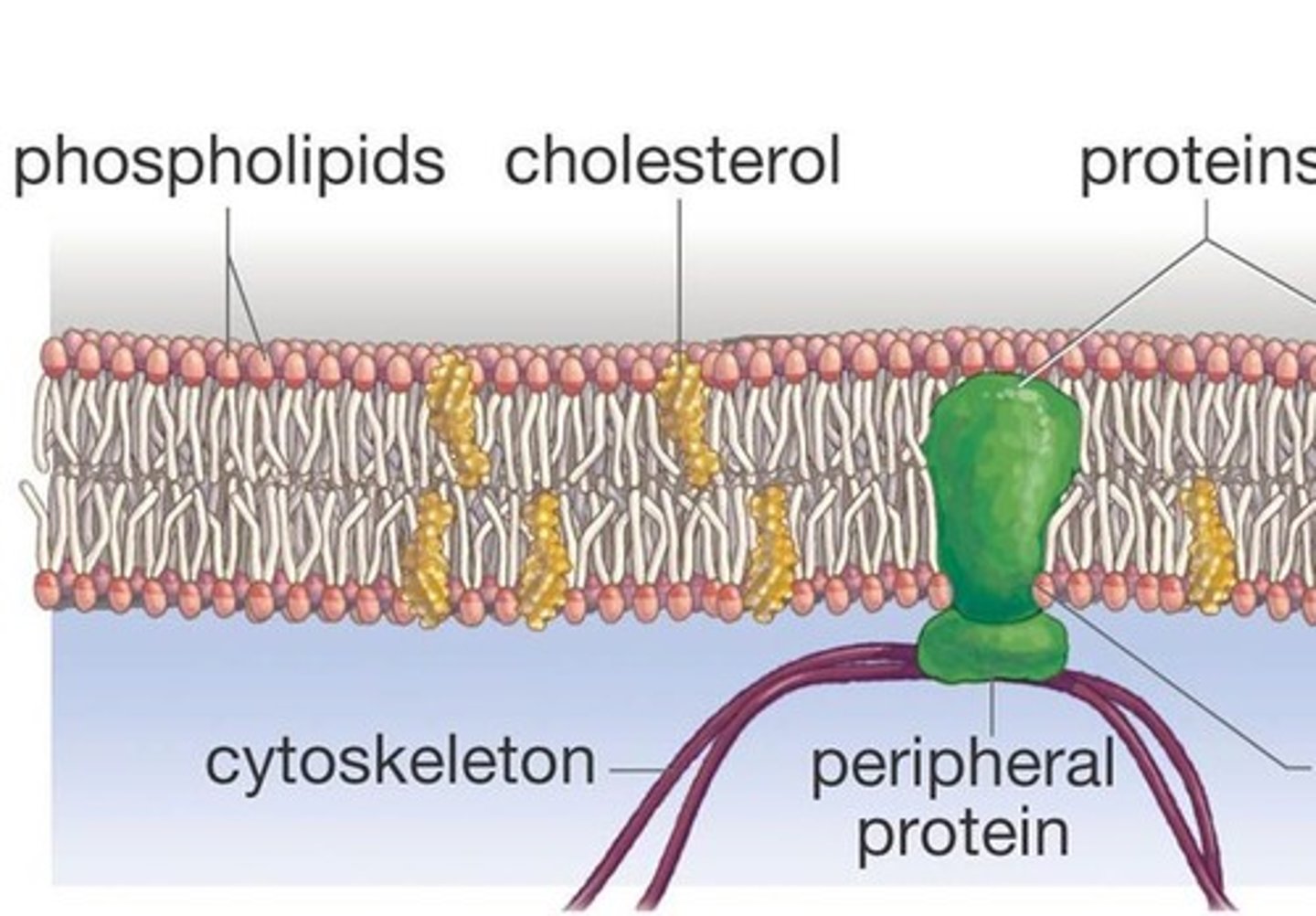
What 3 factors affect membrane permeability?
- Heat
- Ethanol
- Detergents
How does heat affect cell membranes?
As the temperature increases, the phospholipids gain kinetic energy
This causes gaps to appear between the phospholipids
The membrane becomes more permeable
At high temperatures, the proteins in the membrane will denature
How does ethanol affect cell membranes?
Alcohol dissolves the phospholipid bilayer, therefore the higher the alcohol concentrations, the more permeable the membrane becomes
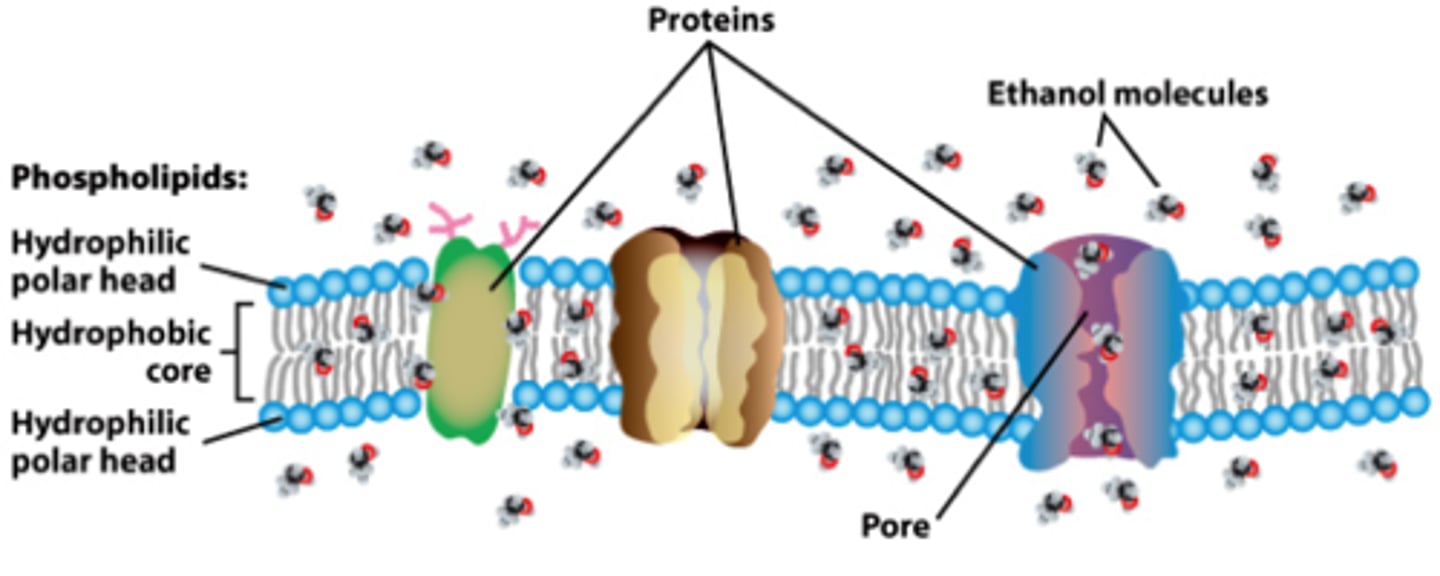
How do detergents affect cell membranes?
Detergents dissolve the phospholipid bilayer, making the membrane more permeable
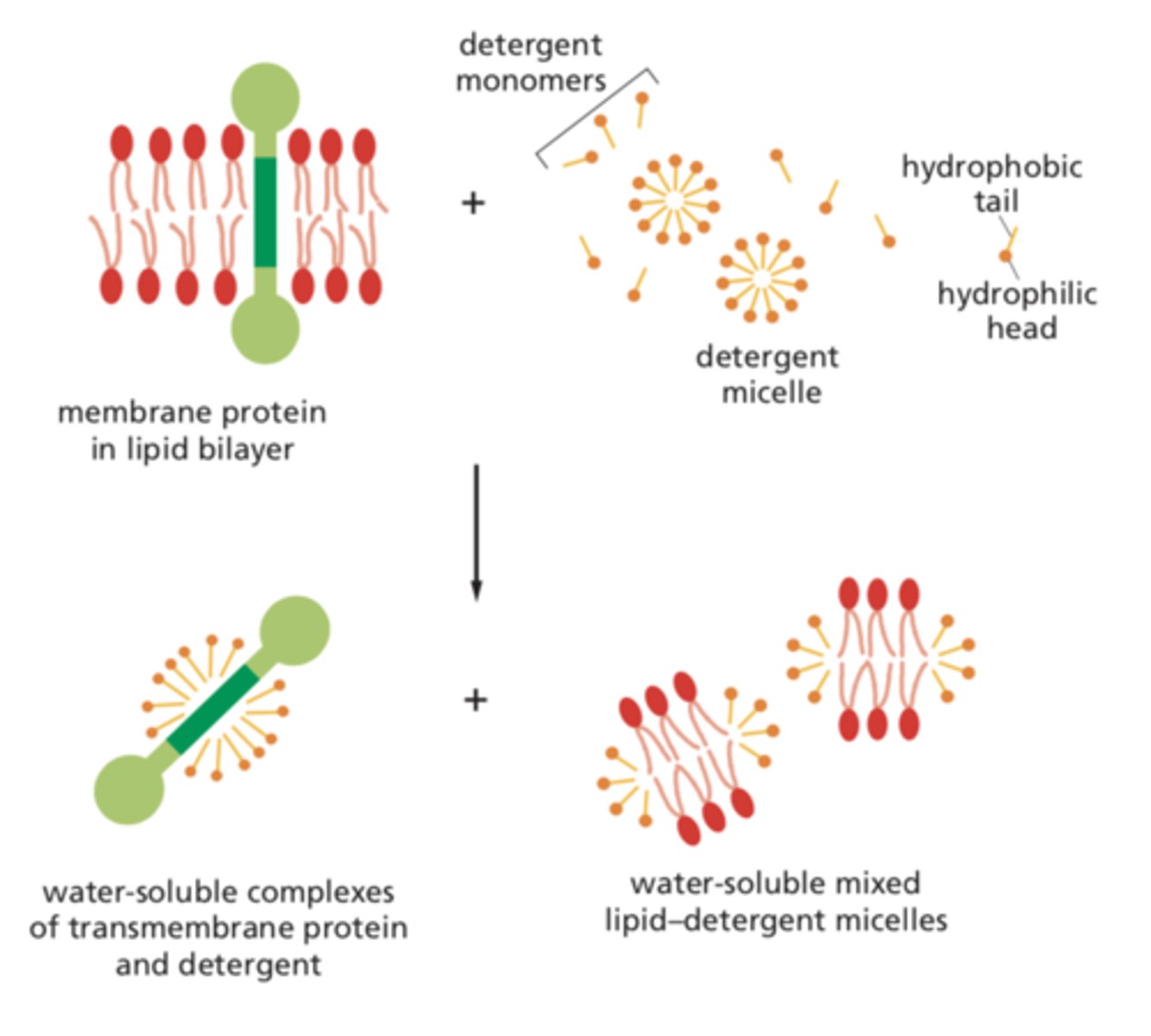
What must be controlled in the beetroot experiment?
- Mass/length of the beetroot
- Same species of beetroot
- Same volume of water
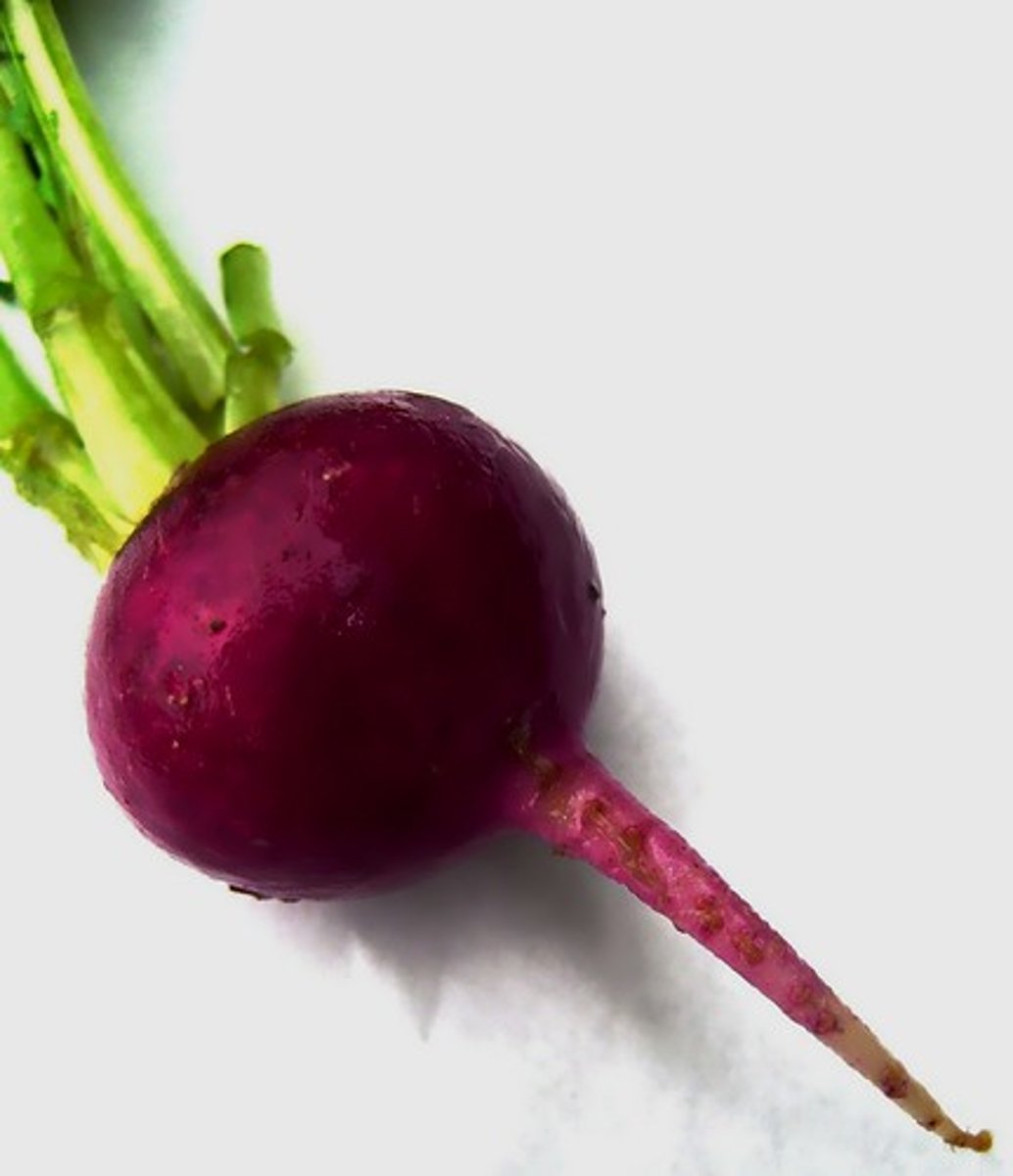
What must you do after you cut and weigh your beetroot samples?
Dry the beetroot samples once cut, in order to remove any excess pigment caused by damaging the membranes in the cutting process
Beetroot experiment
1. Cut small pieces of beetroot to equal sizes using a cork borer
2. Weigh and dry samples
3. Place them in thermostatically controlled water bath
4. Increase the temperature of the water bath in 10C intervals. Samples of water should be taken 5 minutes after each temperature was reached
5. Calibrate the colorimeter by setting it to 0 using a blank.
6. Use a red filter
7. Then put in the cuvette with the solution. Measure the absorbance. Ensure to calibrate between each sample we test
8. As temperature increases, the absorption increases
Why does the sample solution with beetroot become more red at higher temperatures?
As the temperature increases, the phospholipids gain kinetic energy. This causes gaps to appear between the phospholipids. The membrane (tonoplast and plasma membrane) become more permeable. Therefore more pigment will leak out of the cell. At high temperatures, the proteins in the membrane will denature.
Diffusion
The net movement of molecules from an area of high concentration an area of low concentration down the concentration graident
What can diffuse straight through the phospholipid?
Small, non-polar molecules
Diffusion occurs until what is reached?
An equilibrium
Is diffusion an active or passive process?
Passive
What factors affect diffusion?
How liposoluble a substance is
The thickness of the cell membrane
The surface area
The difference in concentration
What can't pass through a plasma membrane?
Charged particles (like ions) and large molecules (like glucose)
What 2 types of proteins allow for facilitated diffusion?
- Channel proteins
- Carrier proteins
Channel proteins facilitated diffusion?
Channel proteins (such as pores) allow the transport of ions.
Channel proteins are specific to different ions
Carrier proteins facilitated diffusion?
Carrier proteins allow movement of larger molecules (like glucose, amino acids) across the membrane.
They are specific to the molecule they transport and involve a shape change to release the molecule on the opposite side of the membrane.
What is facilitated diffusion?
- Passive
- Requires a carrier or channel protein
- Molecules move down the concentration gradient
Active Transport
Movement against the concentration gradient (from an area of low concentration to an area of high concentration)
It uses carrier proteins
ATP is required
Exocytosis
- Cytoskeleton contracts to move vesicle to the plasma membrane
- The membrane of the vesicle and plasma membrane fuse, releasing the contents
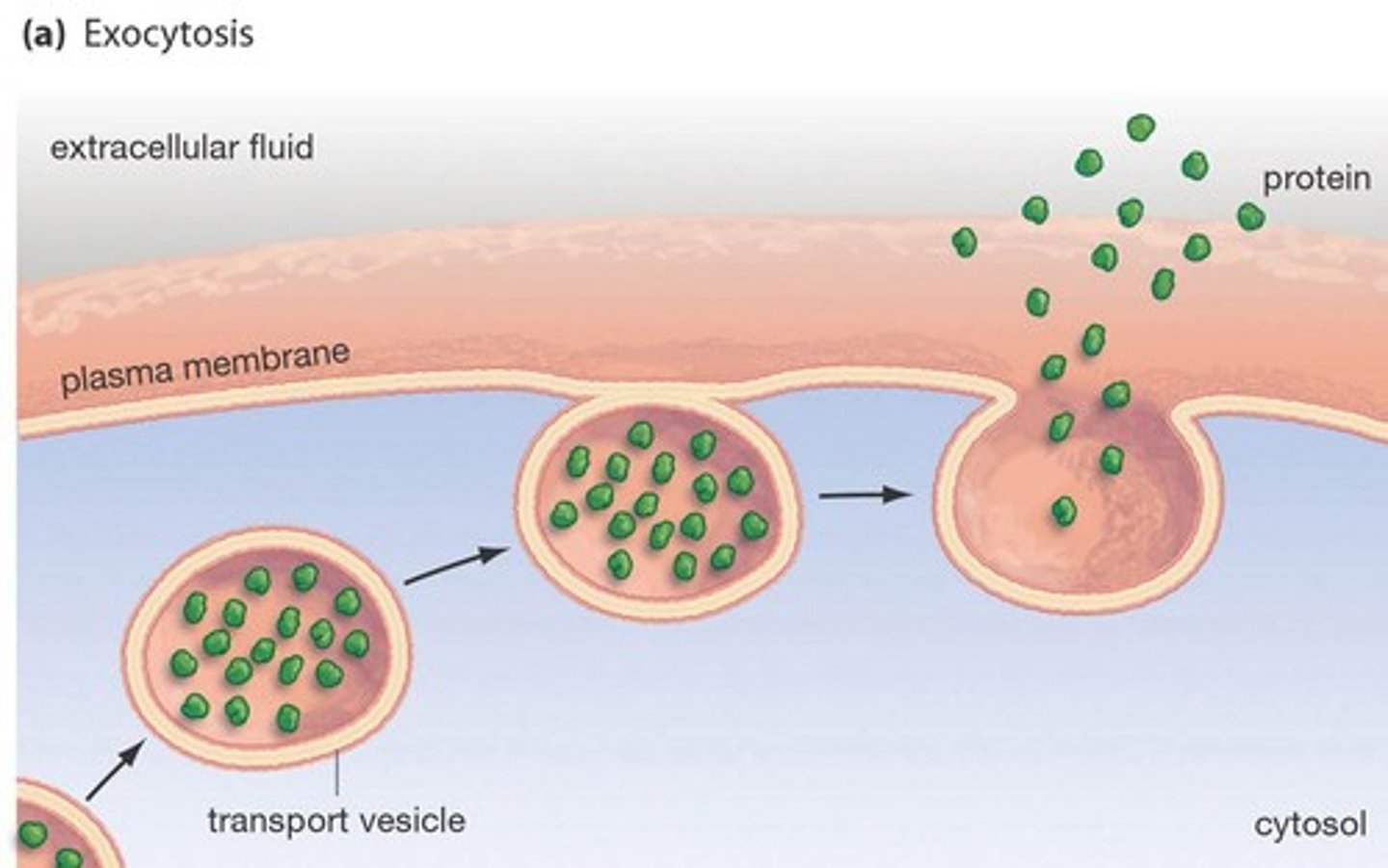
Endocytosis
Cell surface membrane engulfs material, forming a small sac (or 'endocytic vacuole') around it
Definition of osmosis
The net movement of water molecules from a region of high water potential to a region of low water potential across a partially permeable membrane
What symbol represents water potential?

Pure water
0 ψ
Not pure water
More negative
-1000ψ
Cell A has -450ψ
Cell B has -250ψ
Where will osmosis occur?
Cell B has a higher water potential than cell A, therefore water will move from cell B into cell A, down the water potential gradient, by osmosis.
Hypotonic
If a cell is surrounded by pure water (or a solution with a higher ψ) water will flow into the cell by osmosis.
The external solution is hypotonic to the cell.
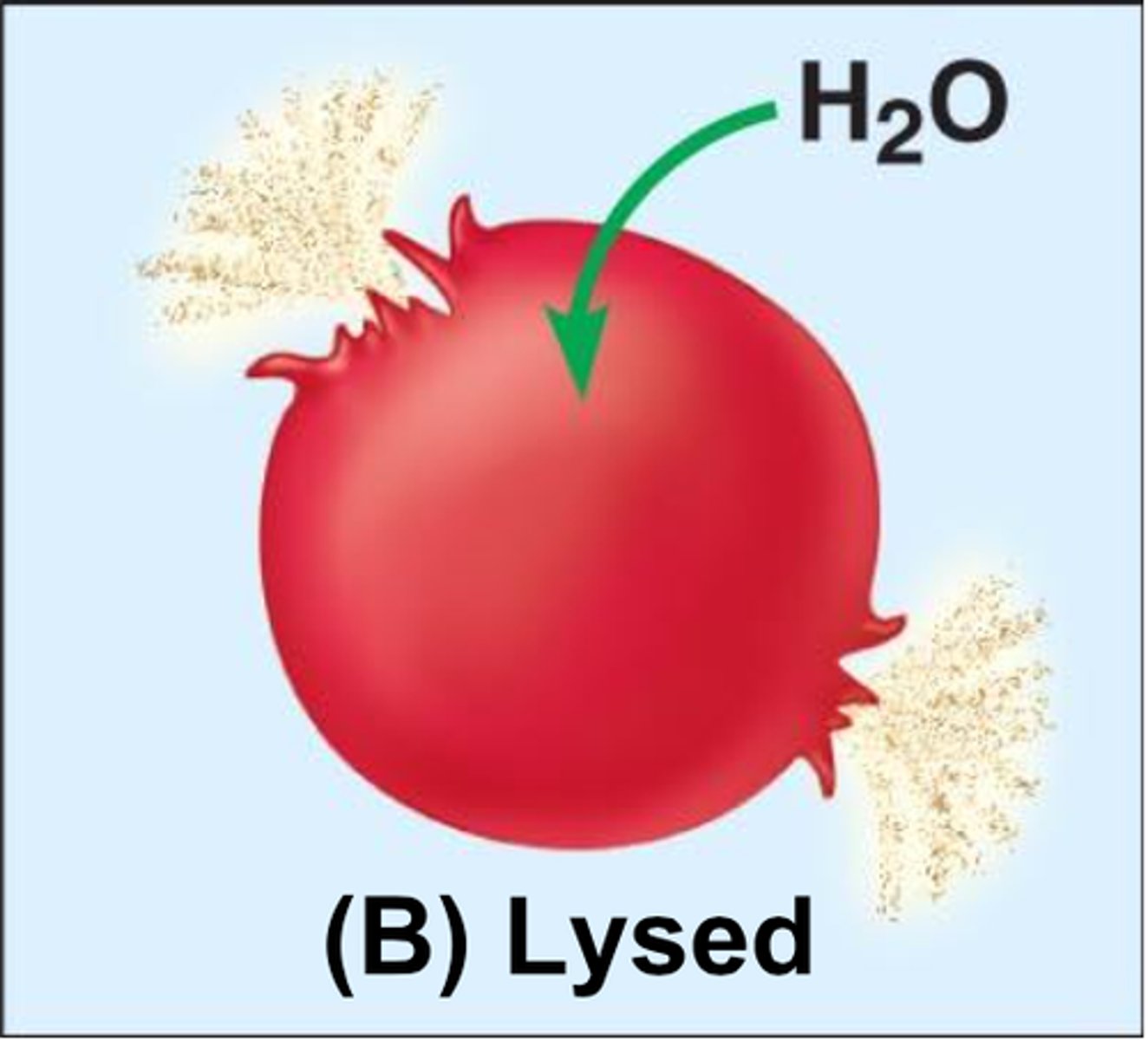
Hypertonic
If a cell is surrounded by solution with a lower ψ, then water will flow out of the cell.
The external solution is hypertonic to the cell.

Isotonic
If a cell is surrounded by solution with the same ψ, then external solution is isotonic to the cell.
Cell have been placed in a hypotonic solution. What happens?
Water has entered cells by osmosis and have become turgid
Cell have been placed in a hypertonic solution. What happens?
Water has left the cells by osmosis and have become flaccid.
Plant cells become plasmolysed as the cell membrane is pulled away from the cell wall
Water potential of potato experiment
1) Cut potato pieces.
Control variables:
- Same length
- Same potato
2) Prepare solution.
Control variables:
- Same volume of solution
3) Weigh potato pieces before placed in solution
4) Place potato pieces in solution
Control variables:
- Same length of time
5) After set length of time, take out potato pieces and dry them to remove excess water. Water has mass
6) Weight potato pieces
7) Use percentage change. This takes into consideration the starting masses. Potatoes have different starting masses
In sugar solution, what happens to the potato?
It loses weight
This is because there is a higher water potential inside the potato, therefore water moves out of the potato into the solution by osmosis down the water potential gradient, so the mass of the potato decreases
In distilled solution, what happens to the potato?
It gained weight
This is because there is a higher water potential inside the solution/water, therefore water moves into the potato from the solution by osmosis down the water potential gradient, so the mass of the potato increases